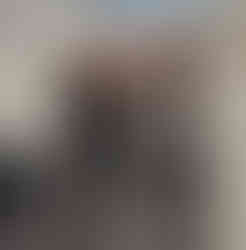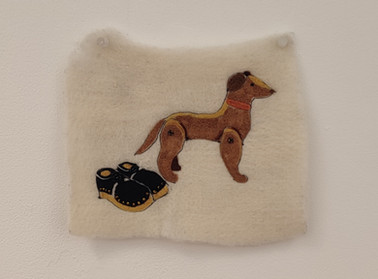Clogs as Intangible Heritage
- Grecia Balassone
- May 31, 2024
- 3 min read
Updated: Jun 2, 2024
'Clogs as Intangible Heritage' is the name of my Degree Show exhibition, which celebrates the end of my undergraduate programme: BA (Hons) Fine Art, at The University of Salford.
In 2023 I started a residency at The Whitaker Museum and Art Gallery as part of one of the modules for university. The Whitaker is located in Rossendale, an area known as 'The Golden Valley' during the Industrial Revolution. The mills were creating employment, and the area was historically famous for their focus on textiles and footwear manufacturing; famous for the spinning of wool and cotton, and later for felt slippers. Clogs were cheap and strong footwear used by mill workers during the Industrial Revolution.
I first encountered clogs at The Whitaker when looking at the stored items. I read numerous books and articles on clogs, their making, their history, clogdancing... and the two books that influenced the most my research were Clogs and Clogmaking (1984) by Jeremy Atkinson, and Clattering Clogs (1941) by Bob Dobson.
Today, clogmaking is an endangered craft in the UK, and Jeremy Atkinson is a master clogmaker who hand-carves the soles and still works commercially. He has trained Geraint Parfitt who is now a full-time clog maker demonstrator at St. Fagans National History Museum in Cardiff, and Simon Brock who is a clogmaker based in Sheffield that makes both band saw cut soles and hand-carved soles.
I spent the last year researching and creating works in response of the above mentioned books, but also regarding clogdancing, and the experience per se of the research. The quilt gathers aspects of my research; it has illustrations of a couple of ceramic dogs from The Whitaker, as well as clog cokers; the Red Rose of Lancaster which symbolises the county of Lancashire (where The Whitaker is located); Jeremy Atkinson's workshop front view, and the red clogs we made together; clogdancing; clogmaking; 'stars' that make reference to the sparking caused by the clogs' cokers against the cobblestones; crazy quilts; etc.
Clattering Clogs collects clog-related poems and memories from different authors. On my exhibition, there are four of these poems along my response to each. Three of them were needle-felted pieces, and the fourth was a 3D-printed clog. The clogs was 3D scanned from The Whitaker's collection; and all the objects pictured in the needle-felted pieces are real objects from The Whitaker as well.
Thank you to
Jeremy Atkinson, for all his help. Jeremy spared me some time to guide me through the process of making a pair of clogs (which are on exhibition), told me about the history of clogs and clogmaking in England and around the world, and gave me a tour where he gets his sycamore from.
The Whitaker, for allowing me to dig into their out-of-view objects, and for having such kind and welcoming staff.
My lecturers, who guided me through the programme, and supported me along (such a big support!).
Technical staff from The University of Salford, who guided me with the steps of making (patchwork, quilting, epoxy resin, needle-felting, digital print, photography).
Technical staff from Maker Space (Powered by Morson Group) who helped me understand 3D scanning and 3D printing, and assisted me with the making of the resin clog.
The Estates Support Team form The University of Salford, who helped me countless times moving the vitrine around the building, and opening and closing its glass.
MCR Clogging, and Rossendale Clog Heritage, who helped me learn the Old Lancs (Heel and Toe) routine.
Bee Davenport-Drury, for performing on the opening night, and bringing along both wonderful violinist and accordionist.
Rawtenstall Library, whose staff connected me with residents who would explain to me the meaning of some poems that were written in old dialect.
May 2024





















Comments